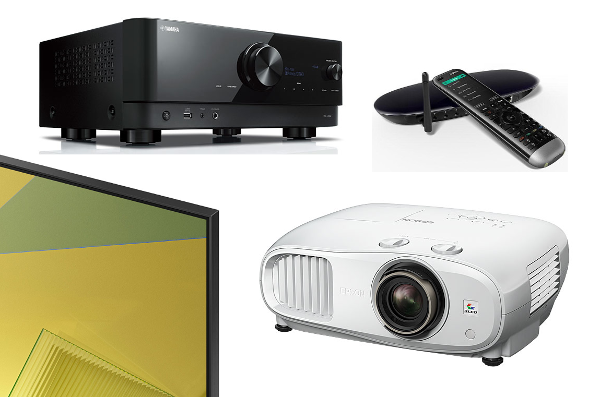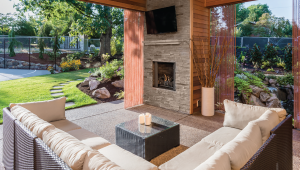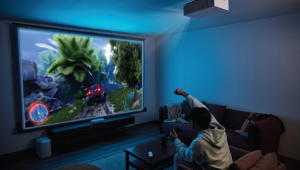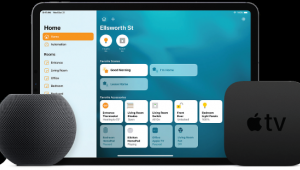How to Plan Your AV Budget Part 2

If you’re fortunate enough to have the budget for a high-end home entertainment system, then absolutely pursue the best gear available. Premium gear does offer premium performance — plus pride of ownership — and it’s hard to put a price on the joy a top-notch system can deliver. Also, if you’ve been scrimping and saving for a specific upgrade — that new Atmos receiver, for example — then far be it from me to dissuade you! But for the bulk of us who need to carefully allocate our A/V budget, here are some suggestions on where to consider saving, or even scrimping.
Where You Can Save Money
To be fair, you could certainly make an argument for why you should actually splurge on these things, which is why I wrote that you might consider saving here. With the exception of turntables, these items see fairly regular improvements and upgrades, stepping-up a model can often cost thousands, and buying the current flagship will usually set you back a ton.VIDEO PROJECTOR – A projector is typically the biggest-ticket item in a home theater system, so it’s a component you’ll hang onto for some time. But when projector tech upgrades do arrive, they are fairly significant (think of the recent move to 4K). Projectors is a category where stepping up from one model to the next in the line can literally double the price. (The reason I own a JVC NX7 and not the JVC NX9 I really wanted, which costs 10 grand more.) Today, even low cost projectors offer resolution, contrast, and light output specs that would have been unthinkable a few years back, letting you enjoy a bright, cinema-size image at a fraction of what it would have previously cost.
And with new players getting into the competitive ultra-short-throw category (Epson, LG, Samsung, Hisense, Optoma), prices will likely continue drop as performance improves. Premium native 4K projectors from Sony and JVC tend to hold their pricing pretty well, but price drops can happen as models near end-of-life, helping you snag step-up performance for a bit less.
RECEIVER/PREAMP-PROCESSOR – The receiver is the very heart of a modern A/V system, and buying a quality unit will certainly set you on a path for success. But of all the components in my system, the receiver (or pre-pro) has been the biggest revolving door. Why? This category sees the most regular (almost yearly) upgrades, enhancements, and tech advancements, and the latest “must-have” feature usually requires new hardware.
As a reviewer, I try to keep my system current, but keeping up with the latest HDMI version, surround format, channel count, or whatever can leave you broke. Unless you really need a specific enhancement or feature (like nine channels of amplification or digital-to-analog (D/A) conversion for Zone 2), buying a solid performing, mid-level receiver that you plan to upgrade every few years is a practical way to lower your system investment.
TURNTABLE – I’ll admit that I’ve never owned a turntable; I’m just not a “vinyl guy.” Like amplifiers, turntables don’t often see major improvements, and even the insane, cost-no-object designs are still mainly about minimizing vibrations and maintaining a consistent 33 1/3 revolutions per minute. Bottom line: a good turntable today will remain good many years from now. Plus, you can always upgrade by choosing a higher-performing cartridge as your budget allows.
CONTROL SYSTEM – I’m all for using a smart universal remote control to simplify system operation, but remotes lead a hard life and frequently break. While some projects with lots of automation, multiple audio/video zones, or IP control requirements will dictate controller needs, a good smart remote will serve most systems, especially if it is just a single-room system (e.g., a home theater). Some control systems (Logitech’s affordable Harmony models, for example) are designed for end user programming, while others (most URC models) require special software only available to pros. If you frequently change out gear or like to tinker with your system, buy a remote you can program yourself.
Where You Can Scrimp
FLAT-PANEL TV – Flat-panel TVs drive the A/V industry, and they generally receive major feature and performance improvements on an annual basis. But new technologies are often accompanied by high-ticket pricing that will quickly come down, so waiting a generation or two before upgrading will save you hundreds, maybe even thousands of dollars. The first 60-inch plasma TV I sold (in 2003) was a 720p-resolution model priced just under $20,000! Today, that set would cost $199 on Black Friday!Premium sets definitely offer improvements when it comes to contrast, video processing, and color accuracy, but unless you know what to look for, you might be hard-pressed to see differences between a good TV and a great one. So maybe instead of that $20,000 77-inch 8K OLED, you can opt for a $5,000 75-inch 8K LED model…for now.
SOURCE COMPONENTS – I paid just under $1,000 for my first DVD player, a component you can buy today for as little as $20. With home entertainment shifting from physical media to streaming, plunking down serious cash on video hardware is a hard sell. Of course, if you own a large library of physical media, getting a good 4K Blu-ray player will certainly help wring the best performance from your system. (You will have to pry my Kaleidescape system from my cold, dead hands!)
The Author
For the past 20 years, John Sciacca has worked as a custom installer in South Carolina. In his free time, he enjoys drinking craft beer and watching movies on his 7.2.6 surround system.





























































